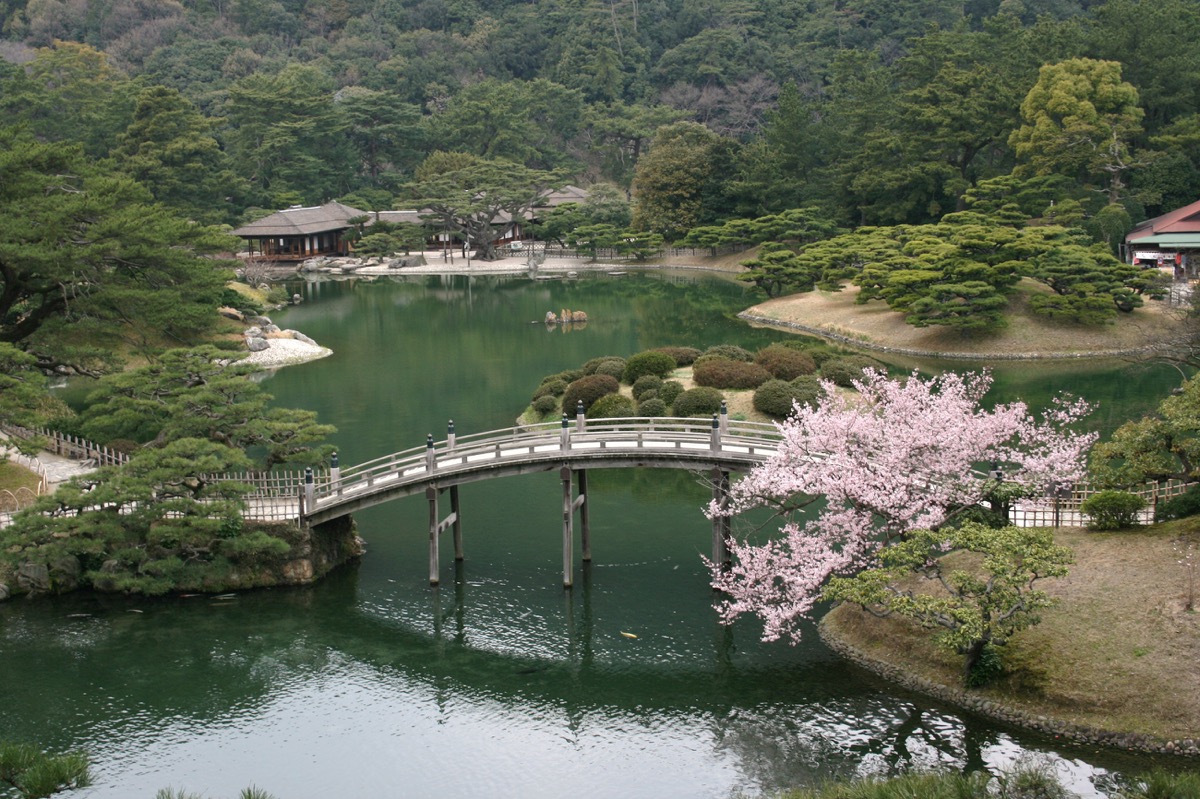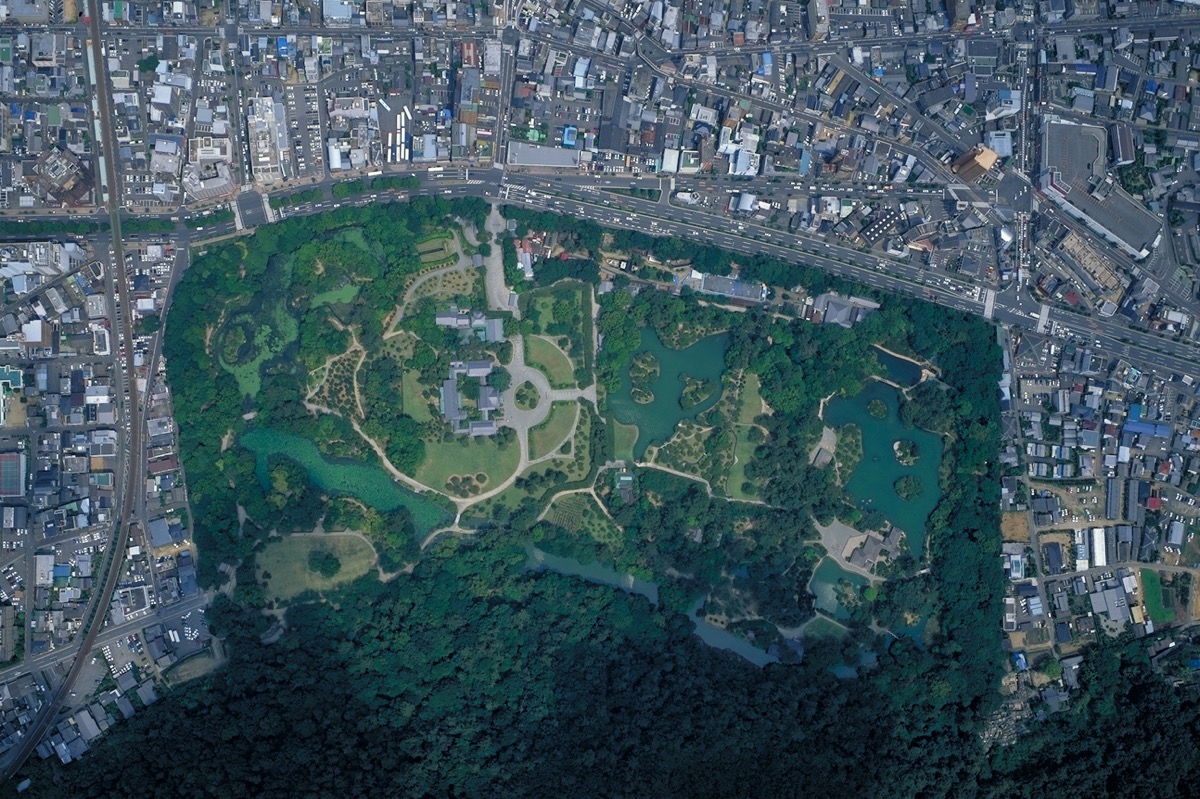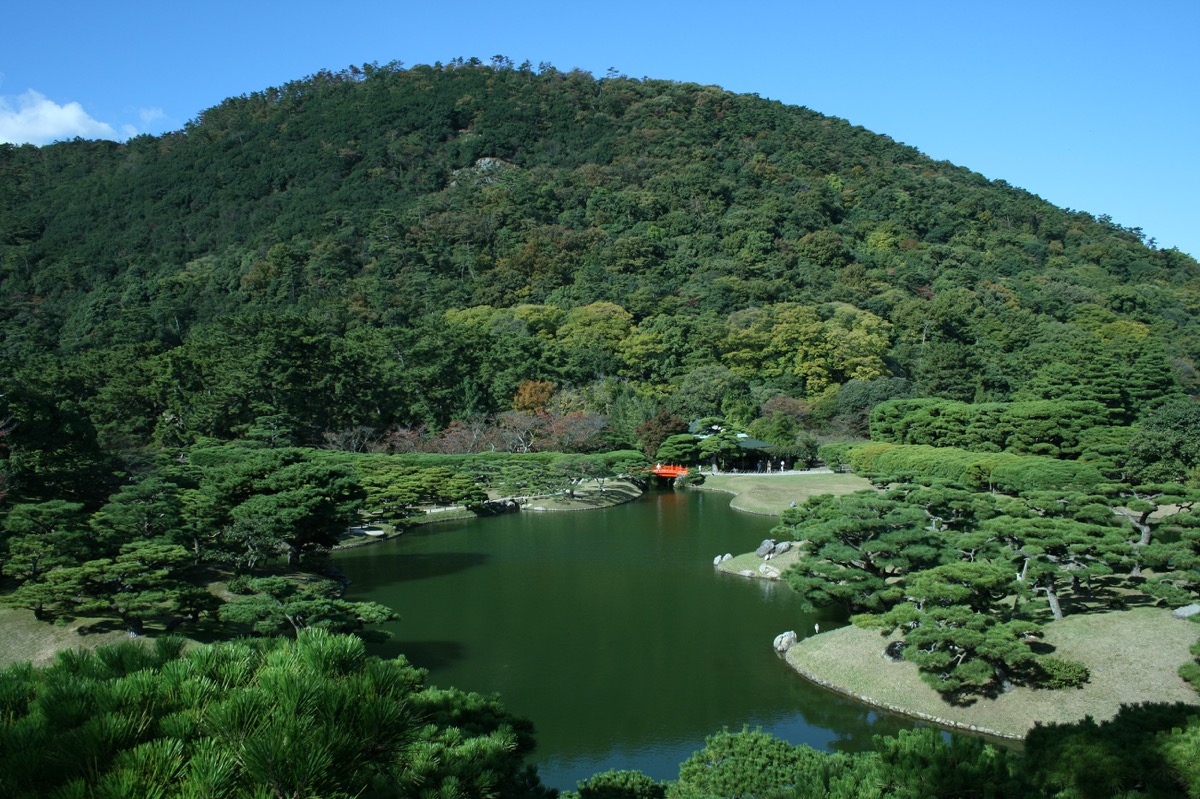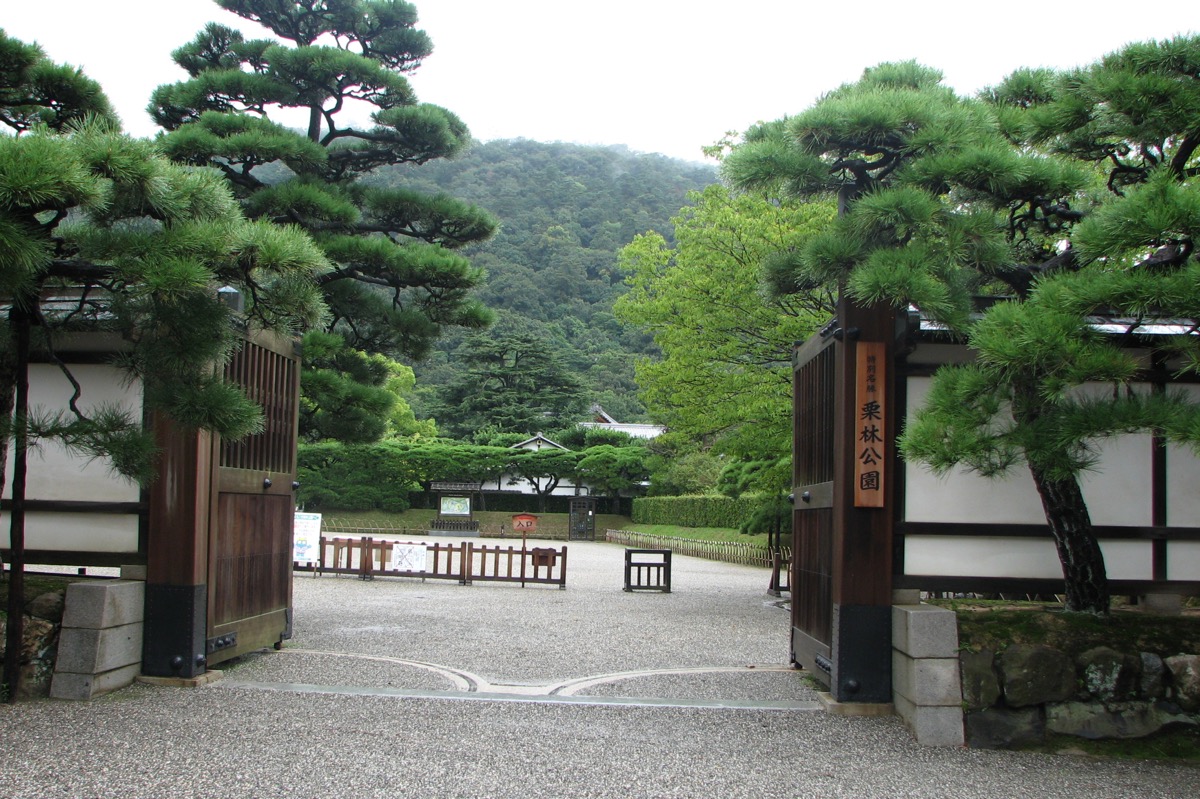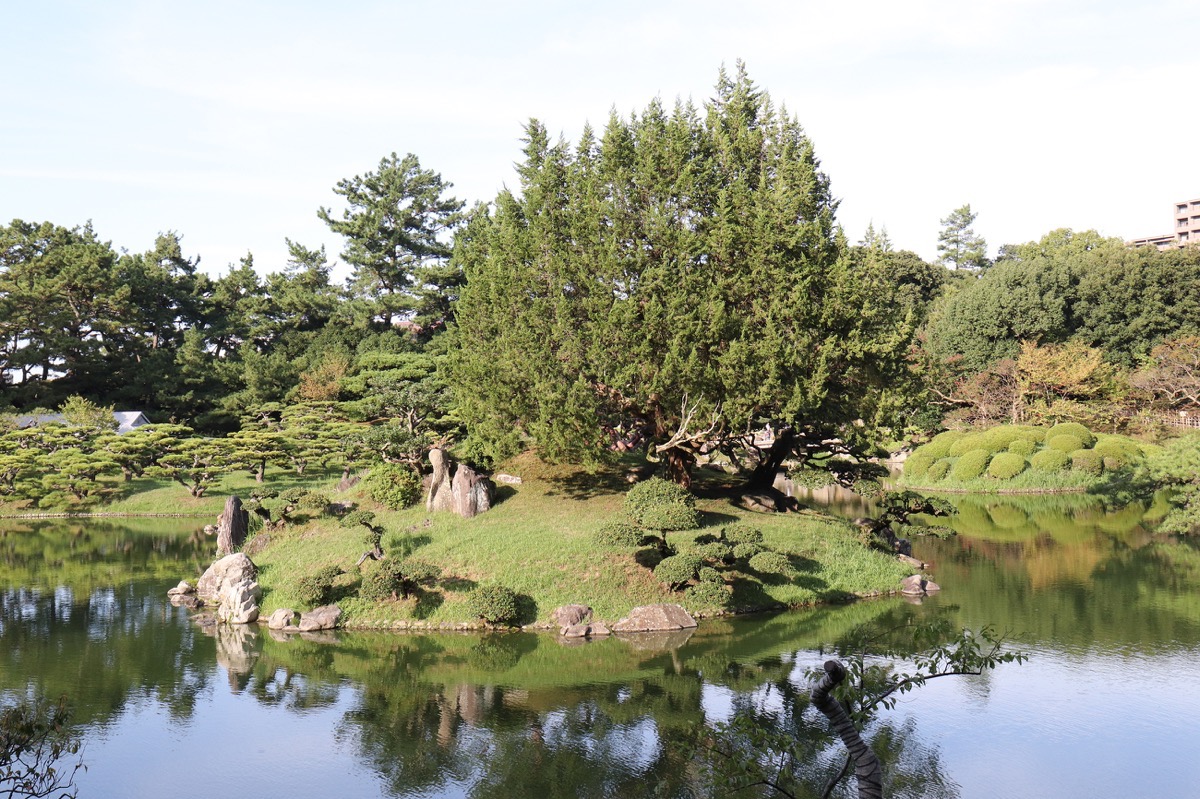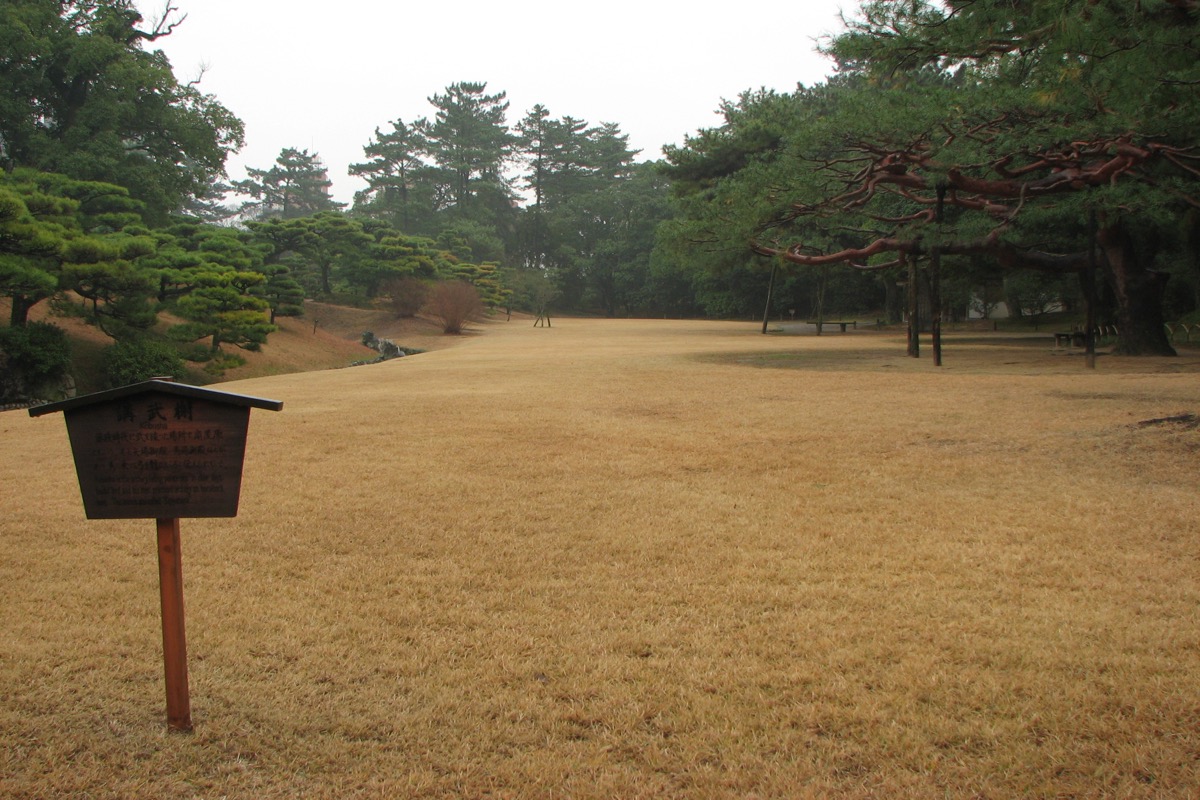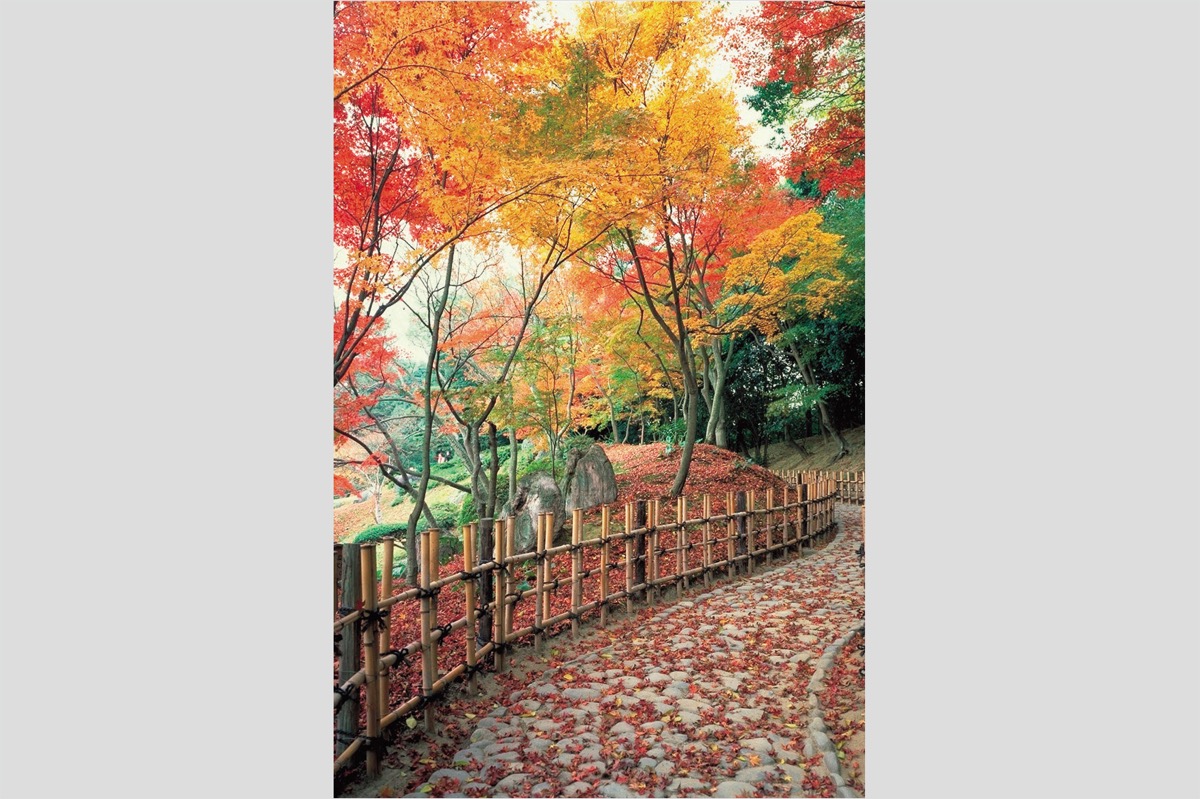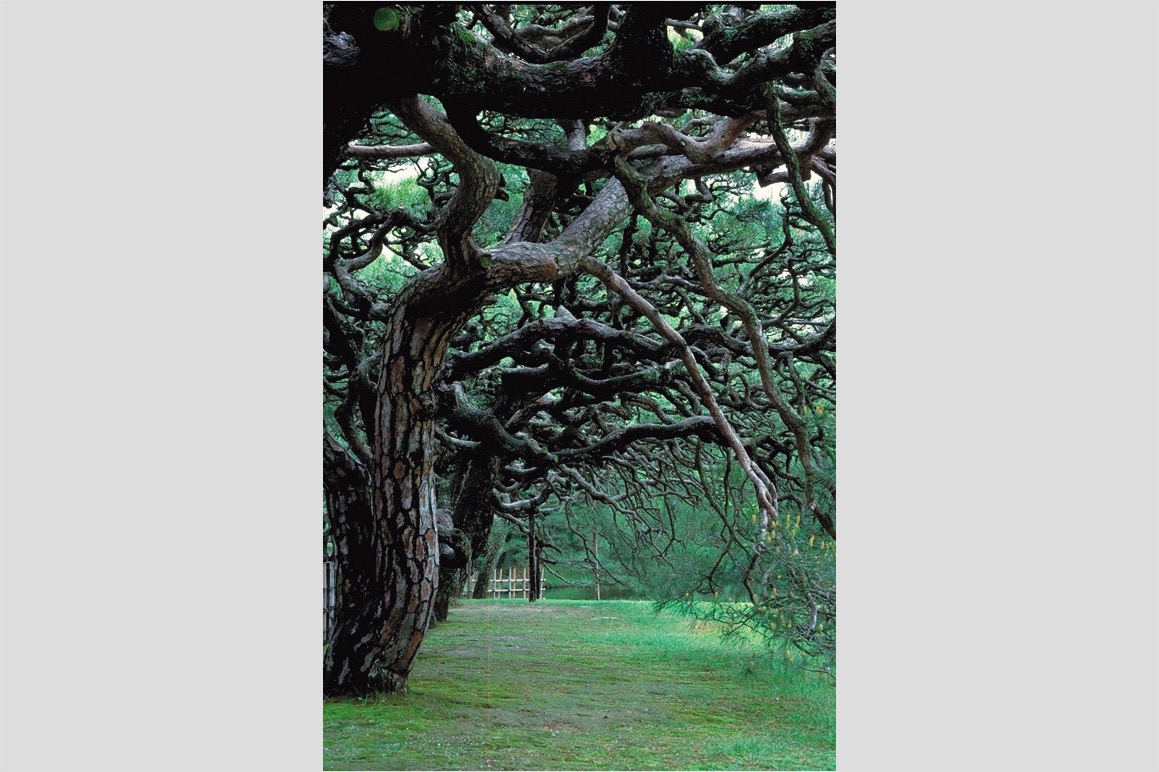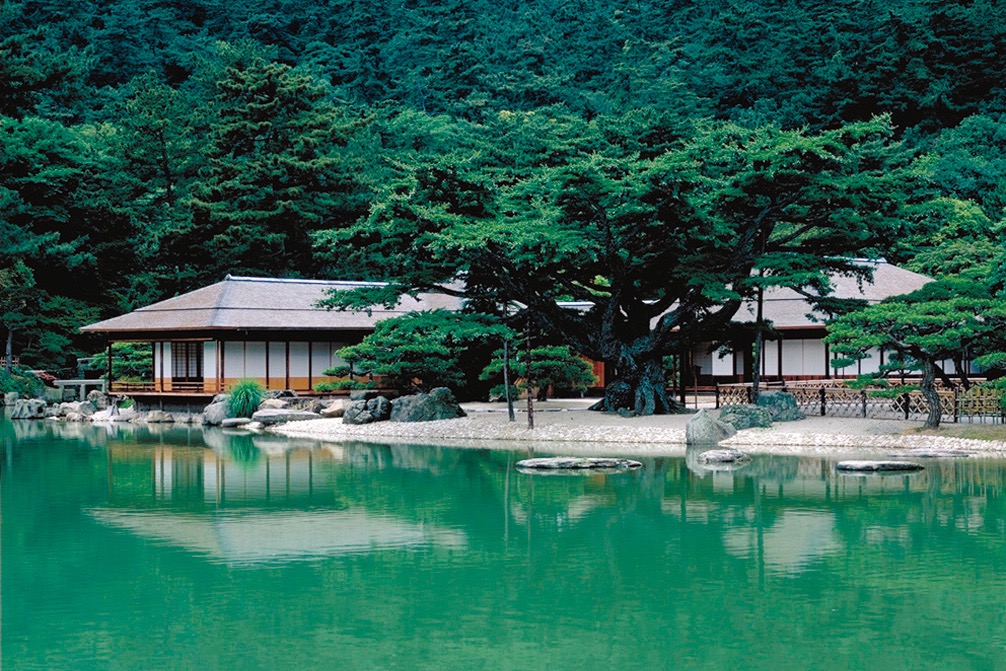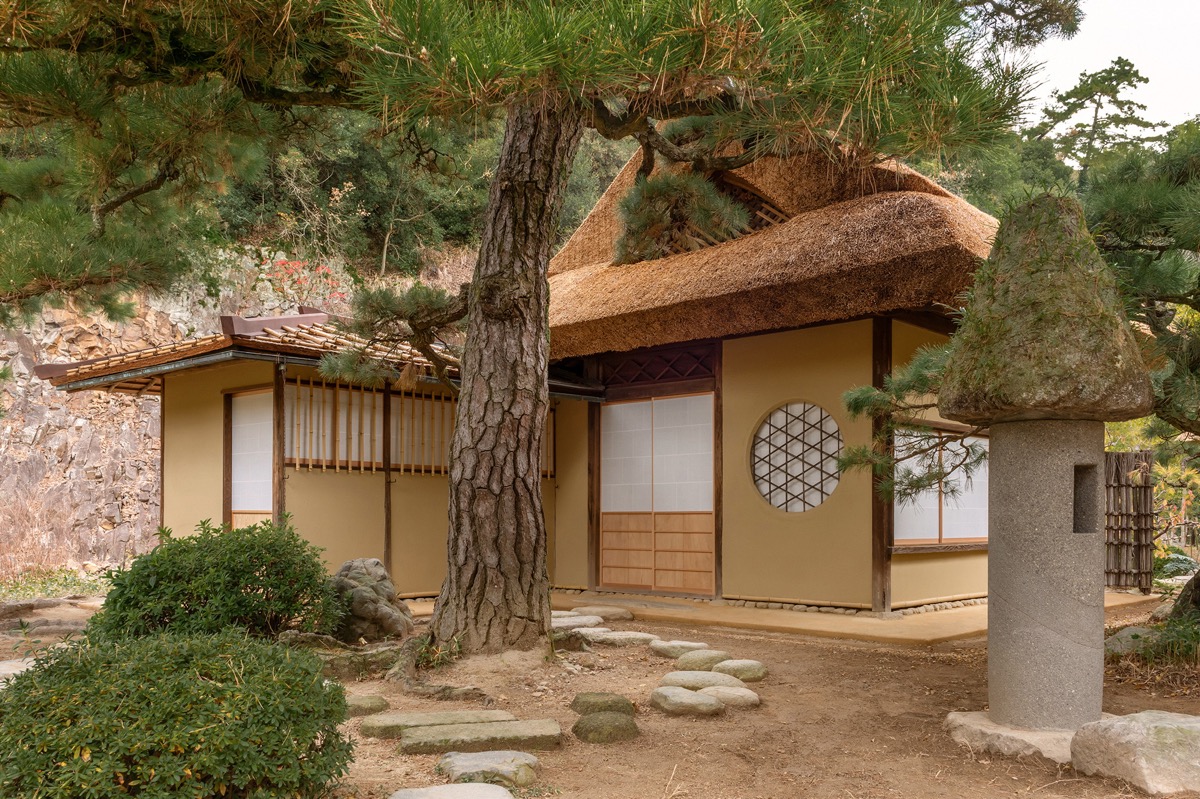Ritsurin KoenRitsurin Garden
| District | Monuments | Period | ー |
|---|---|---|---|
| Set Content/Set Date | Special Scenic Spot・西暦1953.03.31 | ||
| Owner | Kagawa Prefecture, others | Location | 1-20-16 Ritsurincho, Takamatsu, Kagawa |
The Southern Lake area of Ritsurin Garden was constructed during the early Edo Period in 1631 (Kanei 8) by Ikoma Takatoshi, the ruler of Sanuki Province (currently Kagawa Prefecture), creating the prototype for the garden's current form. This famous daimyo (feudal lord) garden was completed in 1745 (Enkyo 2) over the course of 100 years, from Matsudaira Yorishige, the first lord of the Takamatsu Domain who took over from Ikoma, to the fifth lord, Matsudaira Yoritaka.
The biggest attraction here is the path around the pond with gardens showing differing styles arranged together over a vast undulating terrain of 16 hectares (about 3.5 times the size of Tokyo Dome). Six large ponds and 13 hills are created into a rich terrain in order to resemble the seas and the mountains. Mt. Shiun is incorporated in the background as borrowed scenery (shakkei) to make the garden appear more majestic. Planted with various flowers and trees, primarily pine, this garden is known as “ippo ikkei” (one step, one view) for its scenery that changes with every step. Ritsurin Garden is considered to have high cultural value for being a prime example of the Japanese-style garden, among other reasons. The garden was designated a Special Place of Scenic Beauty (National Treasure Garden) in 1953.

